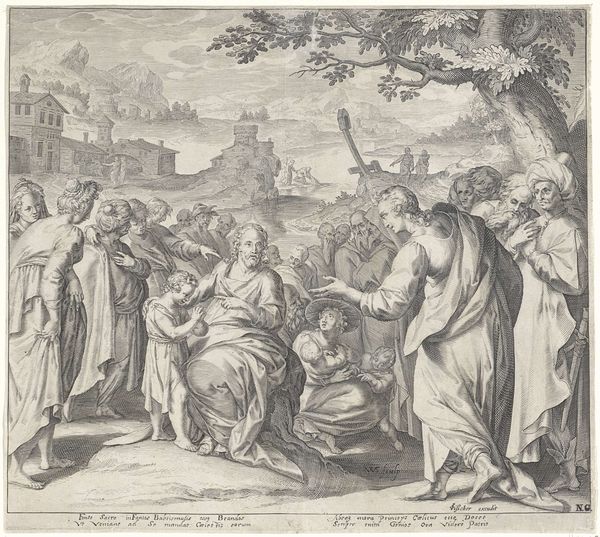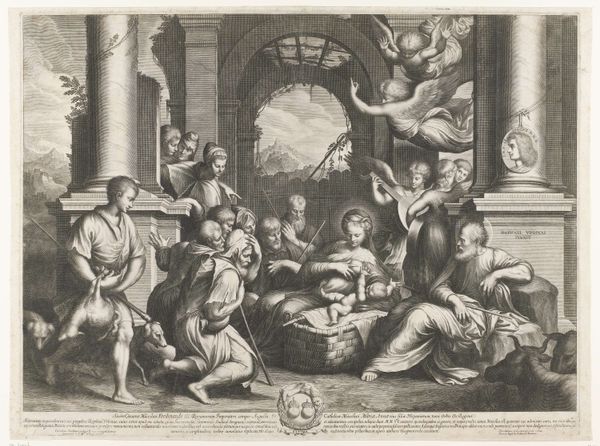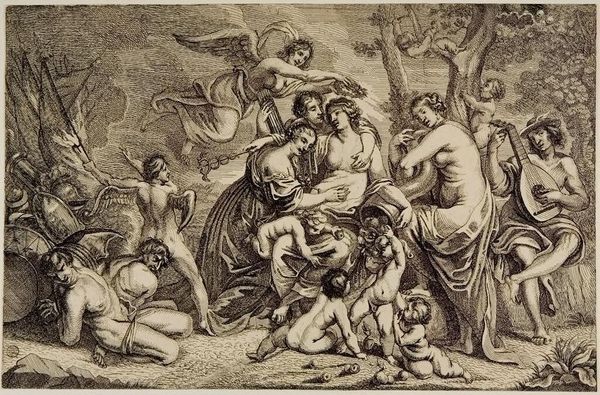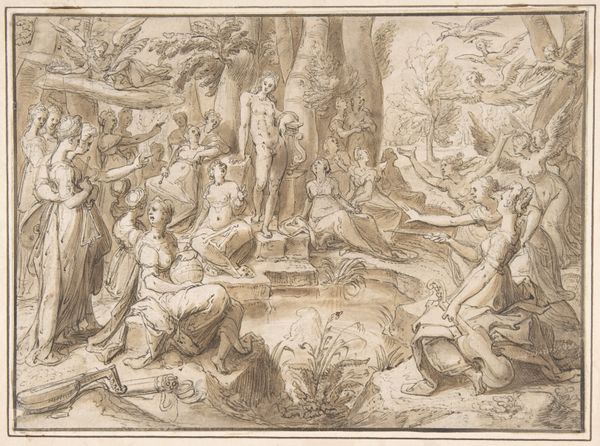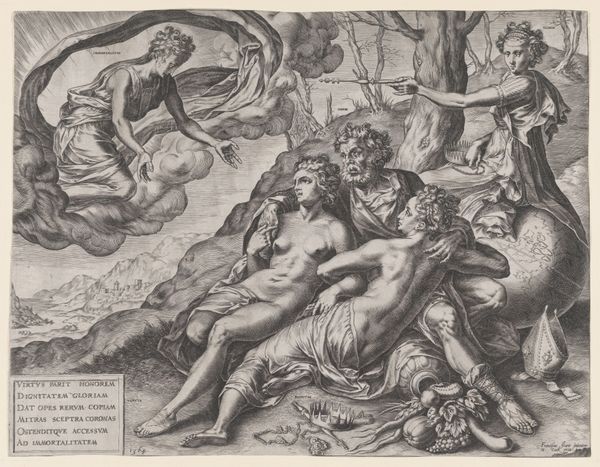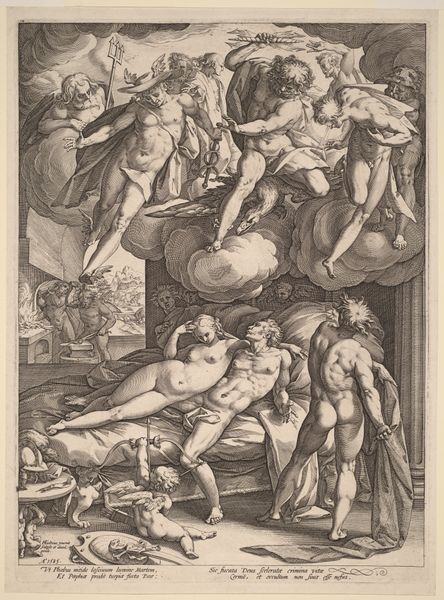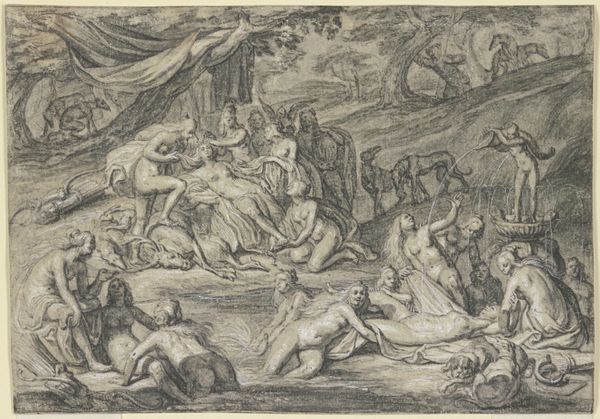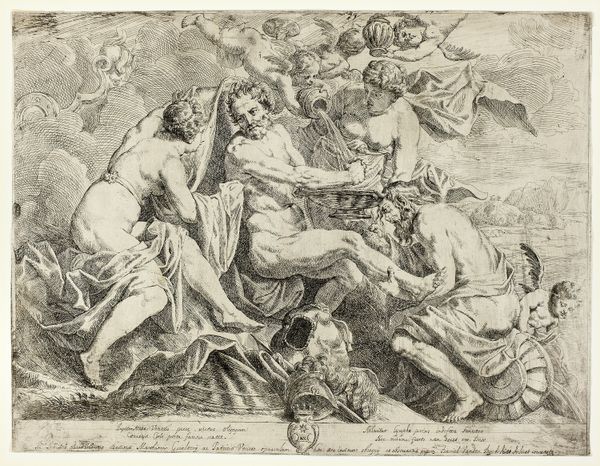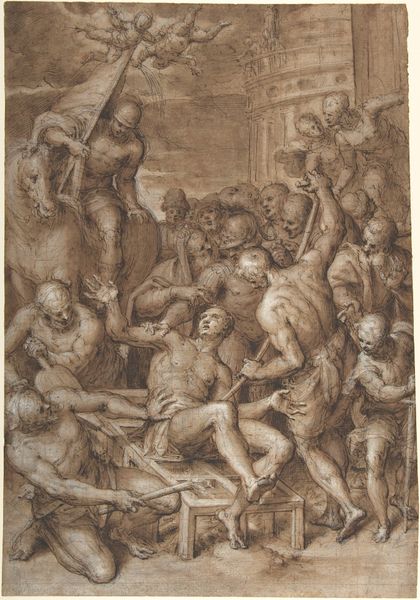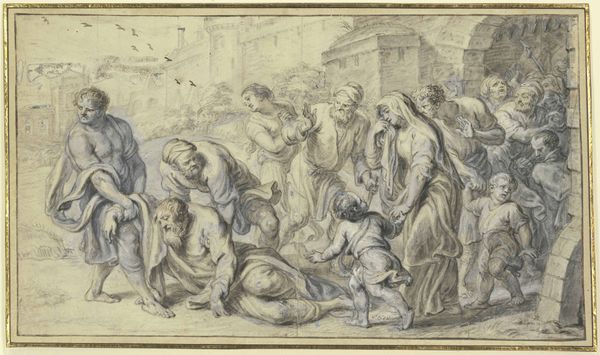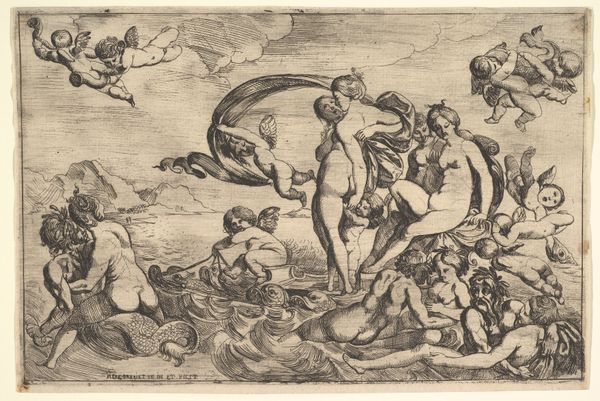
Gemeine Jeuchts Beeldt. Allegory of the Temptations of Youth 1598 - 1610
0:00
0:00
painting, oil-paint
#
allegory
#
narrative-art
#
painting
#
oil-paint
#
mannerism
#
figuration
#
oil painting
#
history-painting
#
academic-art
#
portrait art
Dimensions: 100 cm (height) x 114 cm (width) (Netto)
Editor: Here we have an oil painting entitled "Gemeine Jeuchts Beeldt. Allegory of the Temptations of Youth," created sometime between 1598 and 1610. It's currently housed at the SMK in Copenhagen, and the artist is, sadly, unknown. There’s something…chaotic about it. A tussle of bodies and emotions. What's your initial take? Curator: Chaotic is a brilliant way to put it. Imagine stumbling into a rather… boisterous party thrown by your conscience. This painting screams 'Mannerism' – all that elongated drama, a real visual feast designed to both entice and morally instruct, which, let’s be honest, is a tough balancing act! The artist grapples with the age-old battle between virtue and vice. See how the central figure is pulled between worldly pleasures and a more disciplined path? Editor: I see the armored figure now, almost pulling him away, towards… what exactly? And who are all these other figures? Curator: Precisely! The figure in armour likely embodies virtue or reason. It’s a guiding force, urging towards self-control and perhaps salvation, symbolized by the architecture in the distance. And around our… shall we say, ‘struggling’ protagonist are embodiments of youthful temptations: wine, revelry, carnal pleasures. Notice the subtle yet potent expressions, each figure tugging him further into either ecstasy or damnation? Almost like watching your bad decisions unfold in real time, aren't they? Editor: It’s incredibly…busy. So many conflicting pulls, so much detail. It makes the whole thing feel overwhelming, much like temptation itself, I suppose. Curator: And that’s exactly the point! It's designed to spark self-reflection, forcing one to contemplate our choices, asking: who guides our hand when we're faced with temptation? Are we destined to be dragged down, or is there strength in reason? Did anything particularly resonate with you about how this moral crossroads plays out in this canvas? Editor: Definitely how… messy it all is. Good and bad aren't neat categories; they are tangled, which feels honest. I’ll definitely be chewing on this one for a while! Curator: Absolutely. A beautiful, complicated, rather crowded mirror reflecting our inner lives, and really makes you think, doesn’t it? A true testament to human inner conflict and morality, even 400 years on!
Comments
statensmuseumforkunst almost 2 years ago
⋮
In the nick of time the goddess of wisdom, Athena, rescues a young man from Venus’ sweet love potion. Athena helps him rise while stopping the flow of the potion with her other hand. The small Cupid holds the young man’s head and has not yet discovered Athena’s rescue mission. Father Time encroaches besides Venus as if reminding her that the flames of love are fleeting. Poverty is in the process of stripping the young man of his clothes, while Bacchus, the god of wine, eagerly offers up his grapes. Ceres, the goddess of crops, tries to inform Bacchus’ retinue that you cannot live on love and wine alone. Follow the narrow path of virtue or give in to temptation? Otto van Veen’s painting is an allegory of the choices we must all make on the journey of life: Should we follow the narrow path of virtue or give in to temptation and a life of debauchery that will eventually catch up with us?
Join the conversation
Join millions of artists and users on Artera today and experience the ultimate creative platform.

